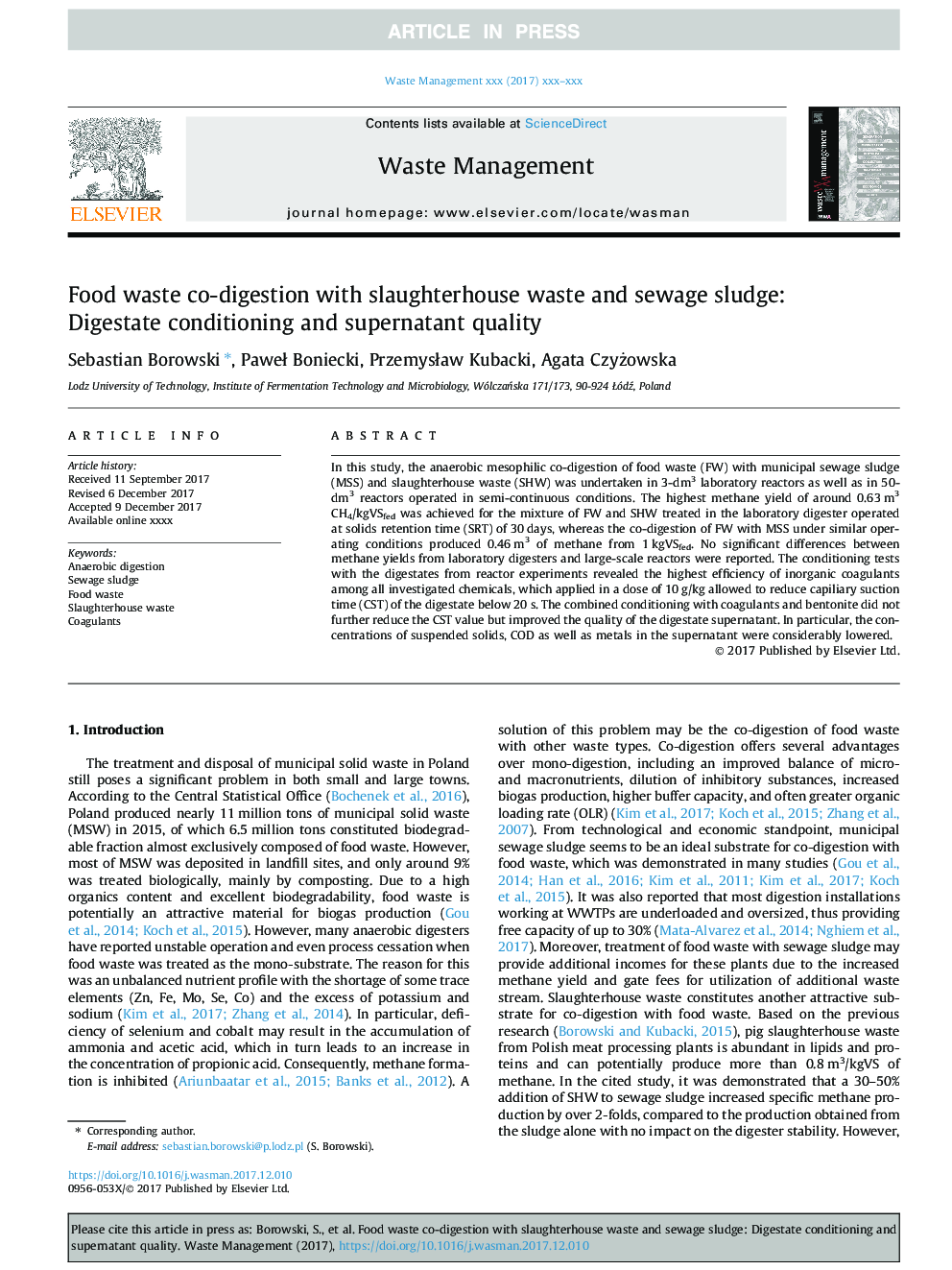| Article ID | Journal | Published Year | Pages | File Type |
|---|---|---|---|---|
| 8869977 | Waste Management | 2018 | 10 Pages |
Abstract
In this study, the anaerobic mesophilic co-digestion of food waste (FW) with municipal sewage sludge (MSS) and slaughterhouse waste (SHW) was undertaken in 3-dm3 laboratory reactors as well as in 50-dm3 reactors operated in semi-continuous conditions. The highest methane yield of around 0.63â¯m3 CH4/kgVSfed was achieved for the mixture of FW and SHW treated in the laboratory digester operated at solids retention time (SRT) of 30â¯days, whereas the co-digestion of FW with MSS under similar operating conditions produced 0.46â¯m3 of methane from 1â¯kgVSfed. No significant differences between methane yields from laboratory digesters and large-scale reactors were reported. The conditioning tests with the digestates from reactor experiments revealed the highest efficiency of inorganic coagulants among all investigated chemicals, which applied in a dose of 10â¯g/kg allowed to reduce capiliary suction time (CST) of the digestate below 20â¯s. The combined conditioning with coagulants and bentonite did not further reduce the CST value but improved the quality of the digestate supernatant. In particular, the concentrations of suspended solids, COD as well as metals in the supernatant were considerably lowered.
Related Topics
Physical Sciences and Engineering
Earth and Planetary Sciences
Geotechnical Engineering and Engineering Geology
Authors
Sebastian Borowski, PaweÅ Boniecki, PrzemysÅaw Kubacki, Agata Czyżowska,
